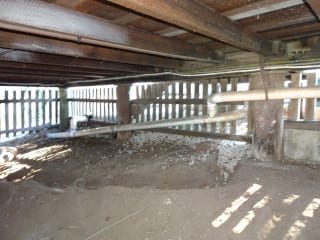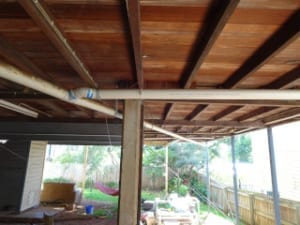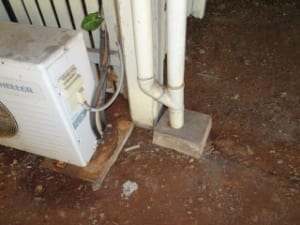Learn about causes of overloaded stormwater systems and what to avoid.
Overloaded stormwater system. The following photos show too many down-pipes from the roof gutters connected to one storm-water pipe. This most commonly occurs when fall of the land is down from the street towards rear of the property. QBIS.
Too many downpipes connected to the stormwater system.
This will cause the roof water to overflowing to back of the gutters and cause rotting of concealed eaves timber if it occurs on a regular basis. Additional and larger downpipes may help but only if connected to more stormwater pipes. This in most cases would not be practical nor feasible.
How to help alleviate problems that occur from an overloaded stormwater system.
Fit:
- Larger roof gutters.
- More and larger downpipes.
- More and larger stormwater pipes.
- Reliefs to front of roof gutters to allow excess water to escape to front rather than back.
- If possible, exit as many stormwater pipes to street as you can. Check with local Council regarding restrictions.
The importance of having an effective stormwater system:
To avoid:
- Potential water entry to interior of the house from roof gutters overflowing also rot to concealed eaves timber.
- Water entering the sub-floor from roof water run-off.
- Erosion of soil and undermining of footings.
- Footing and foundation movement.
- Disputes with neighbours to lower sides of your property.
- Council demands.
Stormwater system and maintenance:
- Watch out for damage from tree and shrub roots.
- Look out for telltale signs of possible blocking if roof gutters overflow often, also look for mould forming on downpipes.
- Have inspection openings fitted for regular inspections and clearing.
- Do not use flexible pipes for stormwater, use straight 100mm pipes. Flexible pipes are prone to blocking quickly!



